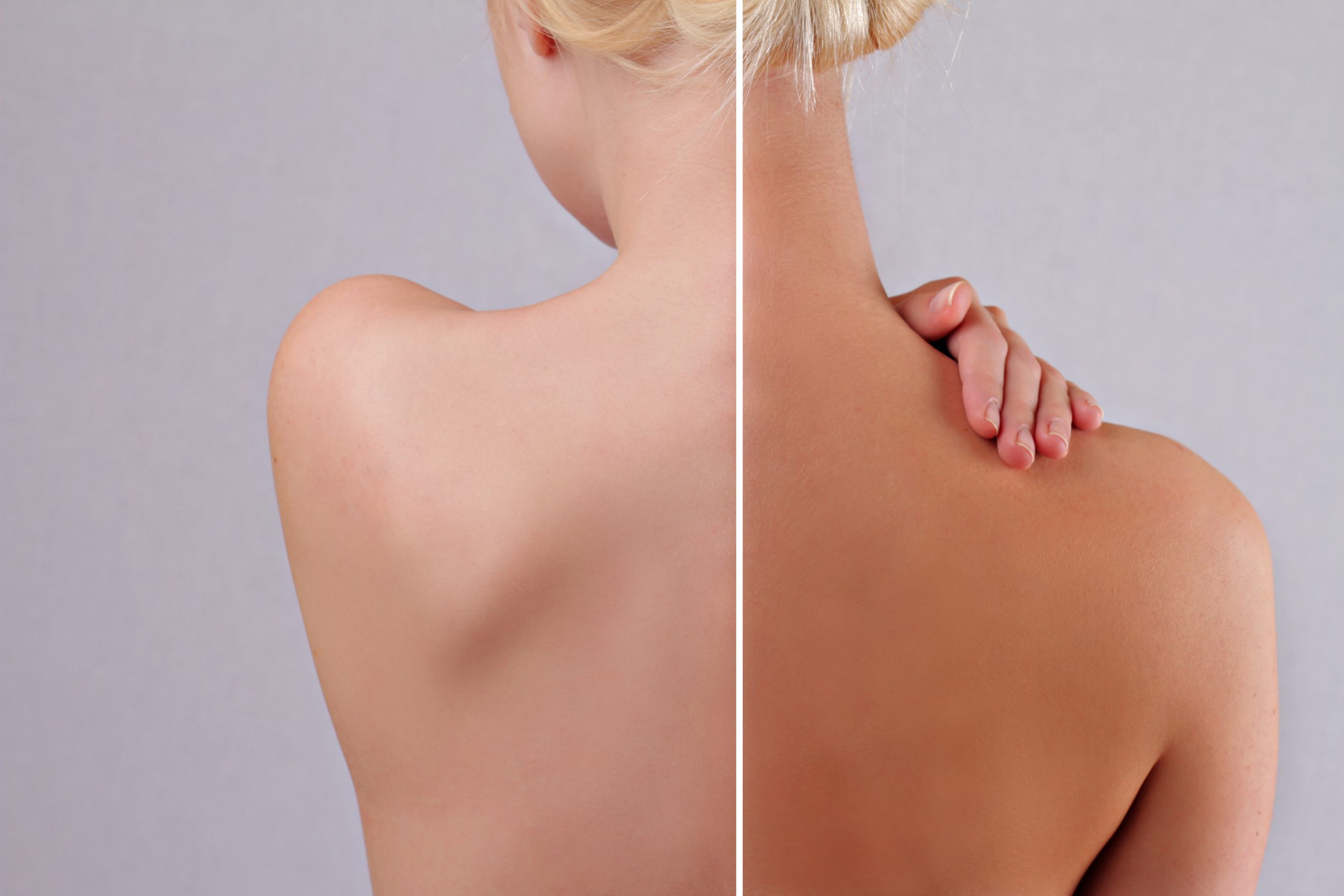
It’s Time to Rediscover Self Tanner for Safe Beauty
For years, our board-certified dermatologists at Genesis Dermatology in Jupiter have implored our clients to avoid the sun, as well as tanning beds. But then we get the pushback: “I look like a ghost without a tan!” “I need that healthy-looking glow!” “A tan helps disguise my uneven skin tone!”
But the risks of tanning, whether from the sun or tanning beds, are high. Tanning increases your risk of basal cell carcinoma, squamous cell carcinoma, and melanoma, the most deadly form of skin cancer.
Then there’s the cosmetic damage. What we think of as a “tan” is the visible genetic damage to the cells on the outermost layer of skin. Sometimes called “photo aging,” or aging induced by UV light from the sun or tanning beds, the long-term results are premature wrinkles, permanent darkening of the skin, blotchy skin tone, dark spots, and a leathery texture.
How we got here
For much of recorded history, pale skin was seen as a status symbol. The lower classes slaved in the sun so their skin became darker, while the wealthy were free to lounge about indoors away from the sun.
It wasn’t until the early 20th century that a darker skin tone became associated with health. That’s because of numerous claims of the positive effects of the sun on various medical conditions. These medical claims were bolstered in 1933 by fashion icon Coco Chanel, who caught too much sun on a Mediterranean cruise, instantly popularizing the tanned look.
A few years later, scientists began to make the connection between sun exposure and skin cancer. But by then the public was sold on the concept that a tan equals health and beauty.
This is unfortunate, because skin cancer is the most common cancer in the U.S. Melanoma, the most dangerous type, kills nearly 20 Americans every day.
A safe alternative
Fortunately, there is a way to get the tanned appearance without the dangers associated with UV light. We can already hear the objections: “Self-tanner comes out looking streaky and orange!”
Yes, the early self-tanners were a disaster, and many of the newer ones still need a deft touch to get right. But the cosmetics industry has vastly improved the product formulation to provide a better result.
Good Housekeeping explains that these advances “address issues like orange cast (by using cooler tones and DHA or dihydroxyacetone, which works by temporarily tinting skin), unpleasant scent (helped by superior odor-neutralizing and masking fragrances), and streaking (better formulation bases such as lotions, creams, mousses, wipes, and mists that apply and spread smoother and easier).”
Marie Claire notes “brands are releasing high-tech, advanced formulas that are specifically made to give you a gorgeous glow that people won’t be able to tell is fake.”
If it’s been years since you tried a self-tanner as an alternative to dangerous UV tanning, we urge you to try some of the newer products.
How to do it right
It also helps to go about it the right way. The American Academy of Dermatology (AAD) offers these tips for ensuring even coverage and longer-lasting results.
- Exfoliate. Use a washcloth to exfoliate the skin prior to applying a self-tanner. Using an exfoliating product will also help remove dead skin cells. Spend a little more time exfoliating where your skin is thickest (elbows, knees, ankles).
- Drying your skin before you apply a self-tanner helps it go on evenly.
- Apply the self-tanner in sections (such as the arms, then the legs, followed by the torso). Massage the product into your skin in a circular motion.
- Wash your hands with soap and water after each section.
- Blend at your wrists and ankles. For a natural look, lightly extend the tanner from your wrists to your hands and from your ankles to your feet.
- Dilute the self-tanner on the knees, ankles, and elbow. These areas tend to absorb more product than the rest of the skin. To dilute, lightly rub with a damp towel or apply a thin layer of lotion on top of the self-tanner.
- Give your skin time to dry. Wait at least 10 minutes before getting dressed. For the next three hours, it’s best to wear loose clothing and try to avoid sweating.
- Apply sunscreen every day. You still need to protect your skin with sunscreen. Be sure that your sunscreen offers all of the following:
- SPF 30 or higher
- broad-spectrum protection (that means both UVA and UVB protection)
- water resistance
One last tip from Cosmopolitan magazine: “The level of DHA is responsible for how dark you’ll get, not the amount you slather on. So to get the most even tan possible, use a mitt to fully saturate your skin in broad, upward strokes.”
Self-tanners have come light-years from their disastrous beginnings. You owe it to your skin to give them a try.

